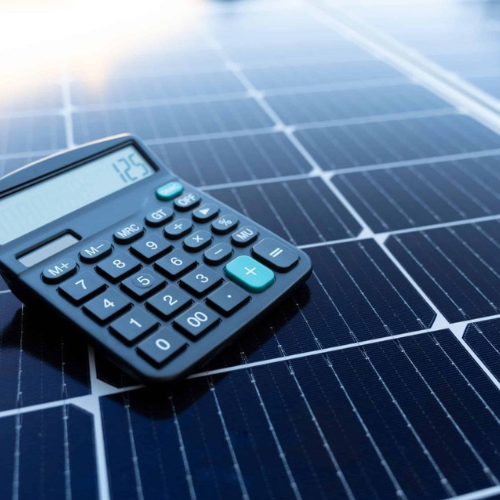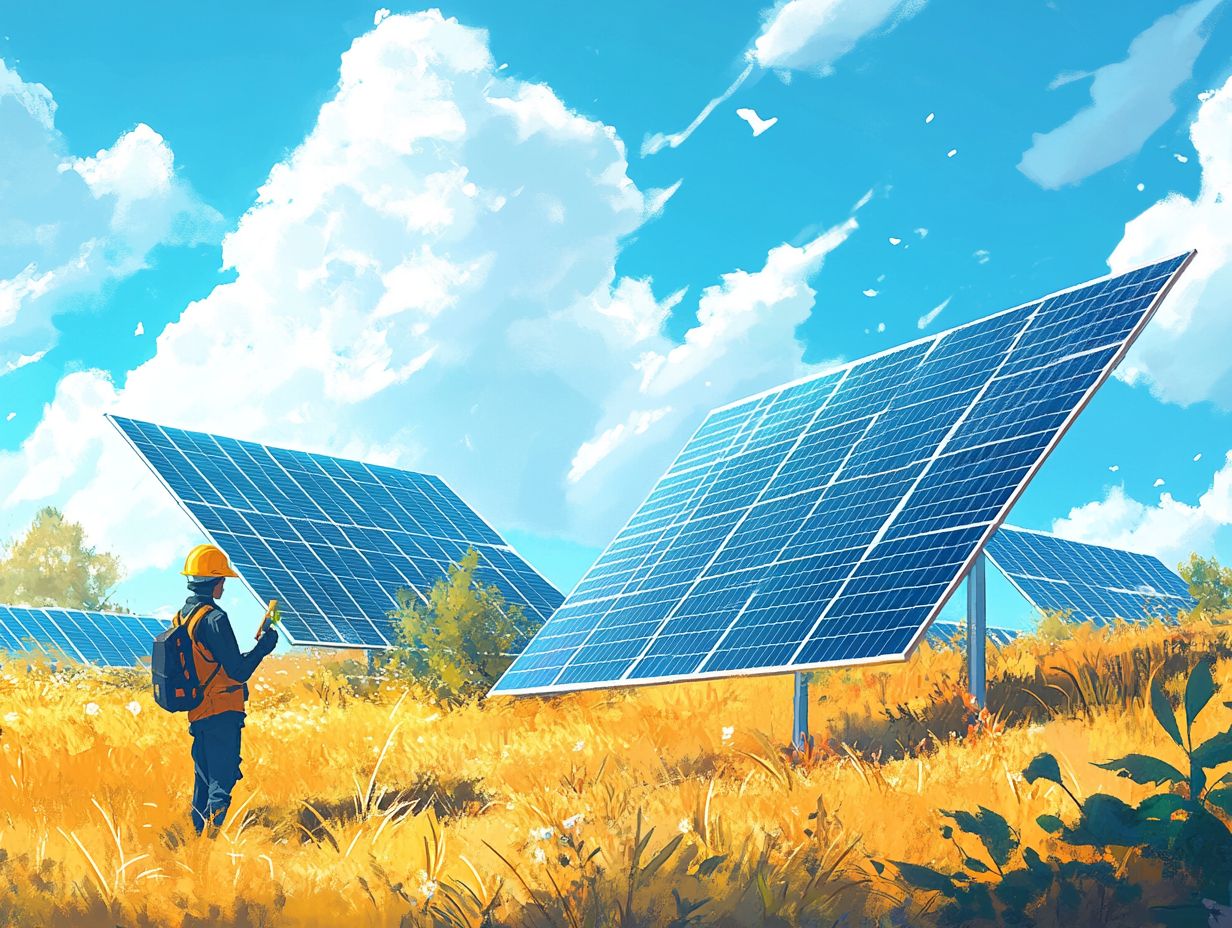Contents
- 1 Key Terms and Definitions
- 2 Understanding Solar Energy Systems and Their Benefits
- 3 Benefits of Solar Energy
- 4 Common Misconceptions About Solar Energy
- 5 Frequently Asked Questions
- 5.1 What is a photovoltaic (PV) panel?
- 5.2 What is a solar inverter?
- 5.3 What is net metering? – Understanding the benefits of net metering
- 5.4 What is a solar tracker? – Maximizing solar energy production
- 5.5 What is a kilowatt-hour (kWh)? – A key unit for measuring energy consumption
- 5.6 What is a feed-in tariff? – Supporting renewable energy investments
Solar energy is shaking up the way you think about power and sustainability. As a renewable resource, it gives you a cleaner alternative to those traditional energy sources and promotes energy independence. But to really make informed decisions, it’s important to understand the components and terminology involved.
This article breaks down the key terms related to solar panels, inverters, and batteries, while also diving into how solar energy systems, including grid-tied systems and off-grid systems, work. You’ll discover the economic and environmental benefits, clear up some common misconceptions, and gain a better understanding of this vital energy source.
So, get ready to explore the bright world of solar energy!
What is Solar Energy?
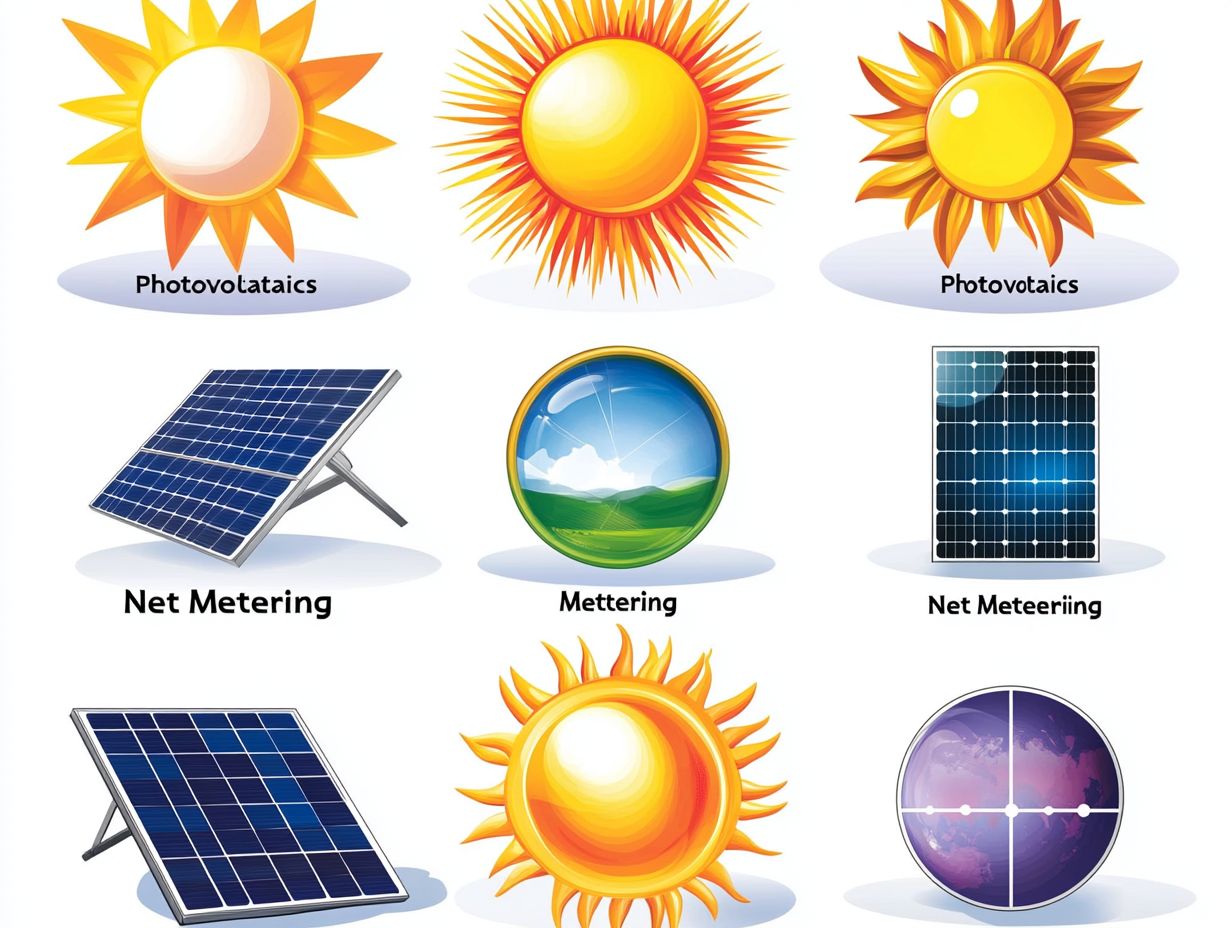
Solar energy is a powerful and sustainable form of renewable energy that you can harness from the sun’s radiant light and heat. By using solar technology, including solar panels and concentrated solar power systems, you can convert solar radiation into usable energy, which can significantly cut down your reliance on traditional fossil fuels.
This shift not only helps reduce emissions and your carbon footprint but also promotes energy independence, making solar energy a crucial part of the renewable energy transition.
The importance of solar energy goes beyond just generating power; it covers a wide range of applications, from those shiny solar panels on residential rooftops to massive photovoltaic systems that can power entire communities and utility-scale solar projects.
Innovations in solar thermal energy can even harness heat for residential heating and hot water, showing just how versatile these solar technologies can be. By adopting solar energy, including solar thermal collectors and solar hot water systems, you contribute to energy efficiency, ensuring that the energy you harness is not only sustainable but also utilized effectively.
As more people become aware of sustainability, integrating solar solutions into your home, business, or industry can help drive a shift towards a cleaner, more resilient energy future.
Green, M. A., Dunlop, E. D., Hohl-Ebinger, J., Yoshita, M., Kopidakis, N., & Hao, X. (2020). Solar cell efficiency tables (version 56). Progress in Photovoltaics: Research and Applications, 28(7), 629-638. Link
Key Terms and Definitions
Understanding solar energy means getting to know some key terms and definitions that are super important in the solar industry, which you can find in a solar energy glossary.
You’ll come across words like solar panels, photovoltaic modules, solar batteries, and inverters. These terms cover the technology and processes that make solar energy work for you, ensuring efficient solar energy conversion.
Solar Panel Terminology
When you dive into the world of solar panels, it’s important to get a grip on some key terms like photovoltaic effect, solar cells, solar arrays, and bifacial solar panels.
These are the building blocks of solar power systems.
Think of solar panels as the heart of these energy systems—they convert sunlight into electricity through the photovoltaic effect.
Getting familiar with these terms opens the door to understanding other key components like inverters and batteries, which are crucial for energy conversion and storage, contributing to overall energy management.
In fact, inverters are the stars that take the direct current generated by solar cells and turn it into alternating current, making it usable in your home or business.
You’ll also want to pay attention to efficiency metrics, like conversion rates and performance ratios, because they give you a good idea of how effectively solar technology captures sunlight.
You’ll find there are different types of solar panels out there—monocrystalline, polycrystalline, and thin-film—each with its own set of traits that can affect how they’re installed and how well they perform. And don’t forget, factors like shading and orientation can really make a difference in your system’s overall effectiveness.
So, putting thought into solar design is key if you want to maximize your energy generation.
Inverter Terminology
Understanding inverter terminology is essential if you’re diving into the world of solar power systems because solar inverters are the stars of the show when it comes to converting solar energy into usable electricity. Grasping concepts like inverter efficiency and grid integration (the process of connecting your solar system to the power grid) can really make a difference in how well your solar installation performs.
You’ll find there are different types of solar inverters out there, like string inverters, microinverters, and power optimizers. Each one is designed to fit various system configurations and energy needs, so you can pick the one that suits you best.
Inverters actively monitor solar panel performance and optimize energy output, enhancing the overall efficiency of your solar setup. Microinverters, for example, work at the individual panel level to ensure maximum energy capture.
For instance, microinverters work at the individual panel level, making sure you get the most energy even when some panels are in the shade. Plus, they provide detailed performance data, so you know exactly how your system is doing.
The efficiency of your inverter is crucial, too, as it dictates how much direct current (DC) gets converted into alternating current (AC) and impacts the levelized cost of energy (LCOE).
This ultimately affects how much energy can be fed into the grid or used in your home. By optimizing energy management, these devices ensure your solar installation runs smoothly and helps contribute to a sustainable energy future.
Key Terms
Battery Terminology
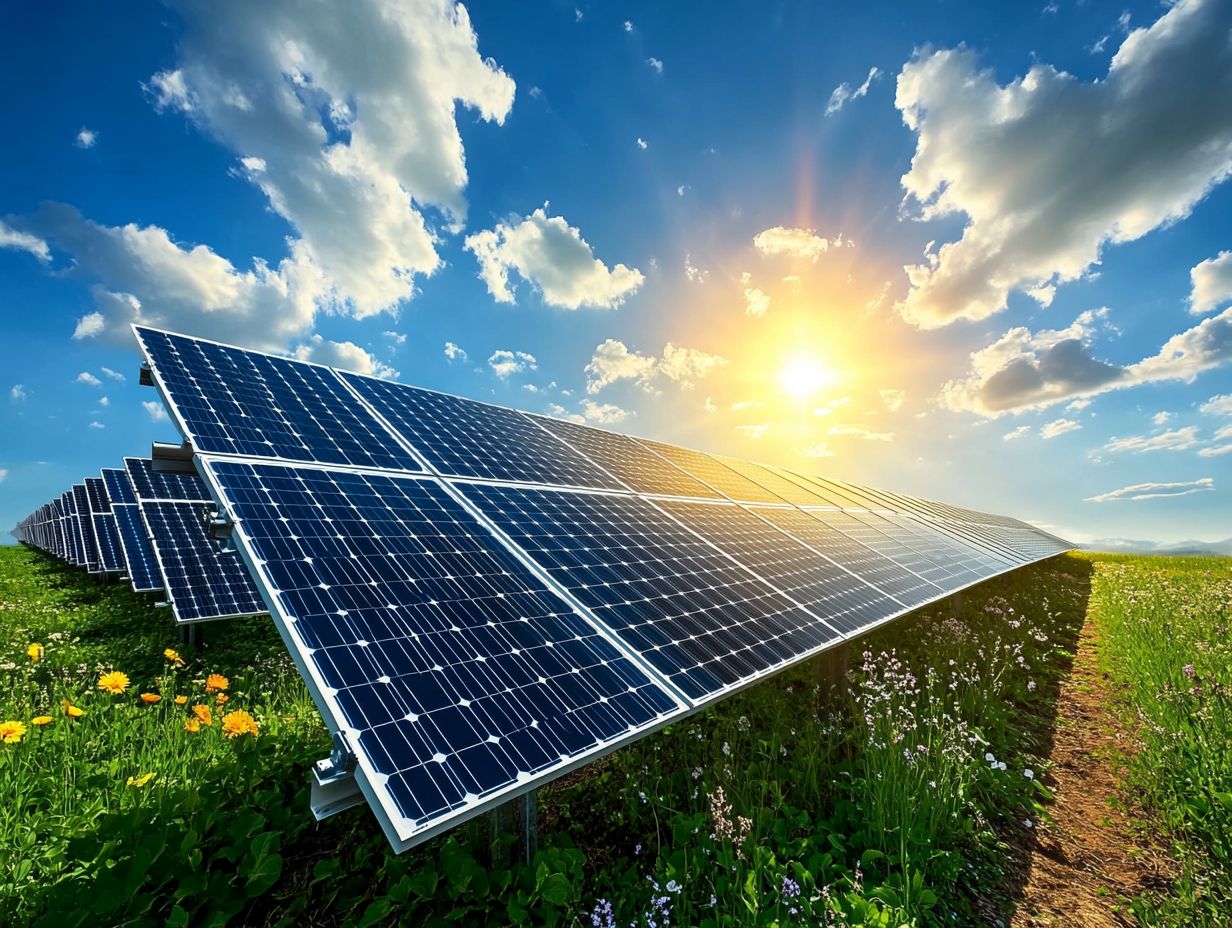
Solar batteries are key players in solar energy systems, designed for energy storage so you can keep that precious solar electricity for later use. Getting familiar with terms related to solar battery technology, like energy storage capabilities, battery systems, and off-grid systems, will help you make smart choices about your solar power setup.
These clever batteries work by storing up excess energy generated during those sunny peak hours and then releasing it when you need it most or when the sun takes a break. You’ll find them in various types, like lithium-ion and lead-acid, each offering its own set of perks, such as longevity and efficiency.
When solar batteries work alongside your solar panels and inverters, they create a seamless energy management system that ensures you have a steady power supply. This setup helps optimize your energy consumption and reduces your reliance on the grid.
It’s a win-win because not only does it boost your energy independence, but it also plays a part in building a more sustainable future and can also be integrated with smart grid technologies.
Zubi, G., Dufo-López, R., Carvalho, M., & Pasaoglu, G. (2018). The lithium-ion battery: State of the art and future perspectives. Renewable and Sustainable Energy Reviews, 89, 292-308. Link
Other Common Terms
Along with the core terminology, there are plenty of other important terms you should know in the solar industry, like solar thermal collectors, distributed generation, and solar heat applications. These terms highlight the various technologies and methods used to make the most out of solar energy, including demand response and solar resource assessment.
For example, solar photovoltaic (PV) systems are the superheroes that convert sunlight directly into electricity, making them a major player in the clean energy world.
Then there’s net metering, a crucial concept that allows you to sell any extra energy you generate back to the grid. This practice boosts the efficiency of your solar setup and contributes to grid stability.
Energy storage technologies, like batteries, are also key. They allow you to capture solar energy for those not-so-sunny days, ensuring you always have a reliable power supply.
By getting a grip on these terms, you can navigate the ever-changing solar market more easily, where new advancements keep driving costs down and improving performance, all while promoting sustainable practices.
Understanding Solar Energy Systems and Their Benefits
To effectively harness solar energy, you need to get a grip on the components and how solar energy systems work, whether you’re looking at something for your home or a big solar farm.
Each part, from solar panels and inverters to energy storage systems, has a crucial role in making your solar setup efficient and performing at its best. Understanding how they all fit together will help you make the most of your solar energy investment.
Components and Functionality
Solar energy systems include several key components like solar panels, solar inverters, and solar batteries, each playing its own important role in managing and converting energy. When you understand how these parts work together, you can optimize your solar energy use and maximize efficiency.
- First up, the solar panels capture sunlight and convert it into direct current (DC) electricity, kicking off the whole energy generation process. This process is influenced by solar efficiency and the quality of the solar modules used.
- Then, the solar inverters step in and convert that DC into alternating current (AC), which is what most of your household appliances can actually use. The efficiency of these inverters is crucial—higher efficiency means less energy is lost during conversion, which directly impacts the performance of your entire system.
- Energy storage systems are essential for capturing excess energy and ensuring a reliable power supply during low generation periods.
Don’t forget about solar batteries! They store any excess energy for later use, making sure your energy needs are covered even when the sun isn’t shining.
By implementing effective energy management strategies, like monitoring and optimizing your energy production and consumption, and conducting an energy audit, you can tie all these components together.
This creates a seamless solar power ecosystem that maximizes both your savings and sustainability.
Benefits of Solar Energy
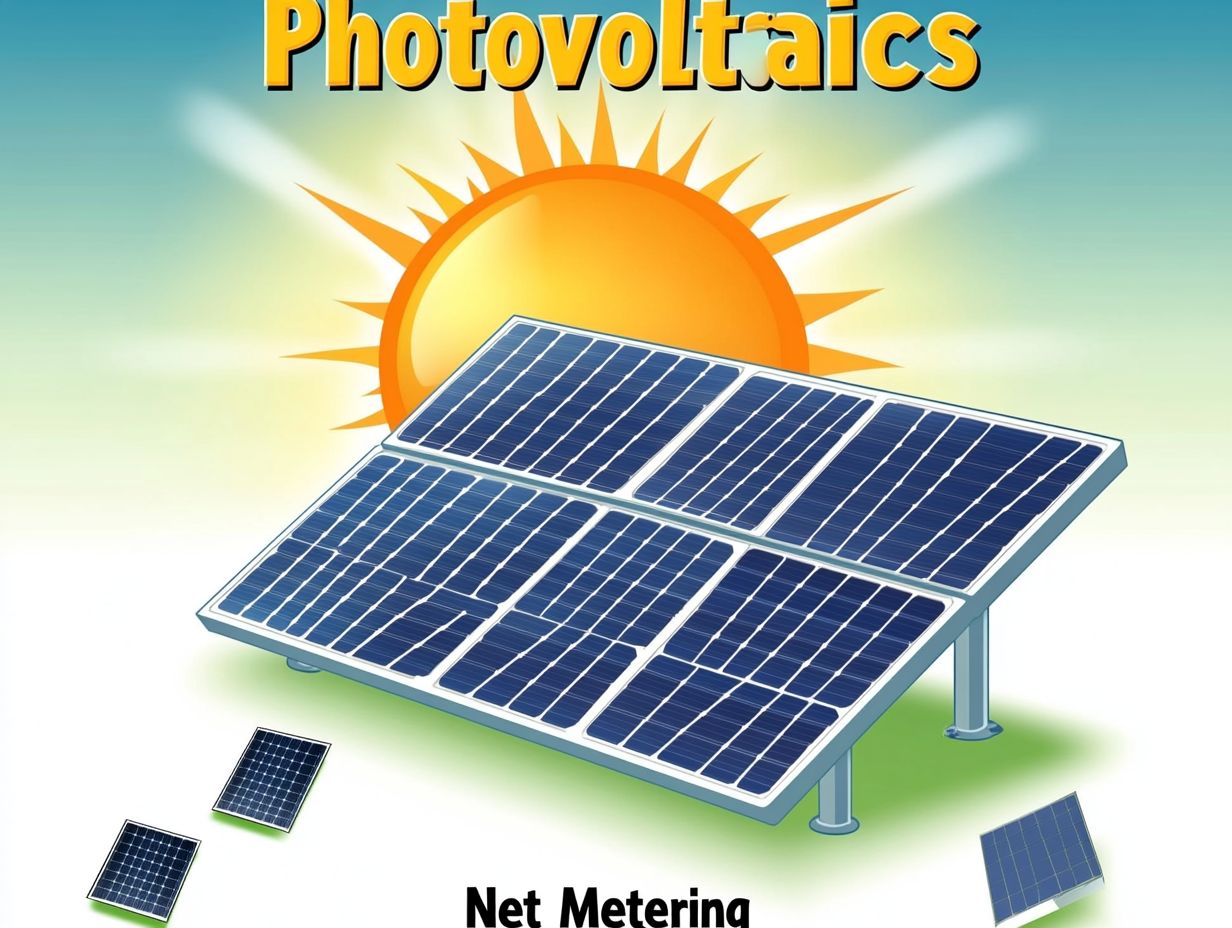
The benefits of solar energy are numerous, offering you some impressive economic advantages, environmental perks, and a clear route to energy independence through clean energy solutions.
When you choose to adopt solar power, you’re not just helping reduce emissions; you could also save some money on your electricity bills by tapping into solar energy applications.
Economic and Environmental Advantages
The economic and environmental perks of solar energy make it a smart choice for homeowners and businesses like you. By tapping into solar energy, you can slash your electricity bills, take advantage of solar financing options, such as power purchase agreements and solar leasing, and even snag some renewable energy certificates for your contributions to clean energy.
Cutting down on fossil fuel reliance not only boosts sustainability but also plays a big role in reducing greenhouse gas emissions and minimizing our carbon footprint. Plus, many states and localities offer incentives and subsidies that sweeten the deal for solar installations, such as tax credits and rebates, making renewable energy more affordable than ever and encouraging energy independence.
When you invest in properties with solar panels, you often see an increase in market value. So not only do you enjoy immediate savings, but you also set yourself up for long-term financial benefits. Embracing solar energy and solar power systems is a major step toward creating a greener, more economically sound future while enhancing energy efficiency.
Barbose, G., Darghouth, N., Millstein, D., Spears, M., Wiser, R., Buckley, M., Widiss, R., & Grue, N. (2016). Tracking the Sun: Installed Price Trends for Distributed Photovoltaic Systems in the United States. Lawrence Berkeley National Laboratory. Link
Common Misconceptions About Solar Energy
Even though solar energy is becoming more popular, there are still plenty of misconceptions floating around that can lead to misunderstandings about solar power systems, solar modules, and solar efficiency.
By debunking these myths, you can clear up any confusion and get a better grasp on the latest trends in solar technology, including solar tracking, and how feasible it is as a clean energy solution that contributes to the energy transition.
Debunking Myths and Misinformation
Debunking myths and misinformation about solar energy is key to helping you understand its true potential. You might have heard common myths, like the idea that solar panels don’t work well in cloudy climates, but those can easily be countered with some solid facts about how solar performance works, including grid-tied systems, and the economic benefits of solar projects.
For example, studies show that solar panels can still produce up to 80% of their rated output on overcast days. That’s pretty impressive, right? It highlights that they’re efficient, no matter what the weather decides to do.
Plus, advancements in solar technology, such as the development of bifacial solar panels and thin-film solar, have driven down costs, making solar energy more accessible than ever. In many areas, solar is now cheaper than traditional fossil fuels, giving you a reliable and sustainable power source.
By using robust performance monitoring systems and integrating energy storage solutions like solar battery systems, you can keep an eye on how much energy your solar panels are producing and the savings you’re racking up. This helps put to rest the idea that investing in solar isn’t financially smart, especially with the support of solar financing and power purchase agreements.
Taking a comprehensive look at all this information really emphasizes why it’s important to address misconceptions about solar energy and help more people adopt these solutions confidently, paving the way for increased solar deployment and integration of advanced solar technology trends.
Frequently Asked Questions
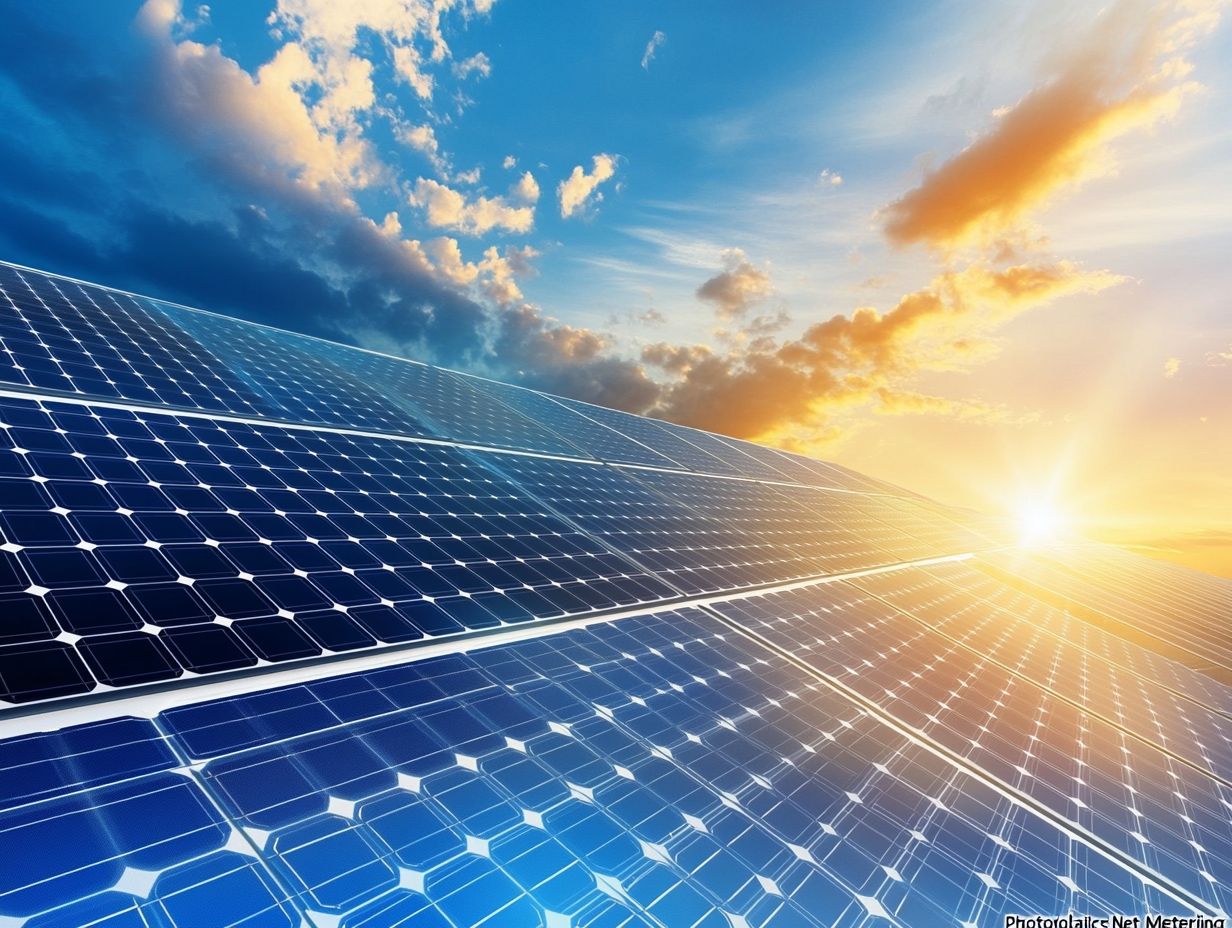
What is a photovoltaic (PV) panel?
A photovoltaic (PV) panel is a device that uses solar cells to convert sunlight into electricity through the photovoltaic effect. It is the most common type of solar panel used in residential and commercial applications and is crucial for solar energy conversion.
What is a solar inverter?
A solar inverter is a device that converts the direct current (DC) electricity generated by solar panels into alternating current (AC) electricity that can be used in homes and businesses. It is an essential component of a solar energy system, which can include microinverters for enhanced solar efficiency.
What is net metering? – Understanding the benefits of net metering
Net metering is a billing arrangement used by utility companies that allows customers with solar energy systems, including community solar projects, to receive credit for the excess electricity they generate and send back to the grid. This credit can then be used to offset their future electricity bills, helping maintain grid stability.
What is a solar tracker? – Maximizing solar energy production
A solar tracker is a device that automatically adjusts the position of solar panels throughout the day to maximize their exposure to sunlight. This increases the efficiency of the panels and can result in higher energy production, especially when utilizing technologies like dual-axis trackers.
What is a kilowatt-hour (kWh)? – A key unit for measuring energy consumption
A kilowatt-hour (kWh) is a unit of measurement used to quantify electricity usage. It represents the amount of energy used by a 1,000-watt appliance in one hour. It is commonly used to calculate electricity bills and assess solar energy benefits and challenges.
What is a feed-in tariff? – Supporting renewable energy investments
A feed-in tariff is a policy that incentivizes the production of renewable energy, such as solar power, by providing a fixed rate for electricity generated by small-scale energy producers, including solar farms. This rate is typically higher than the retail electricity rate, making it financially beneficial for individuals and businesses to invest in solar energy systems, plays a crucial role in expanding the solar energy market.


